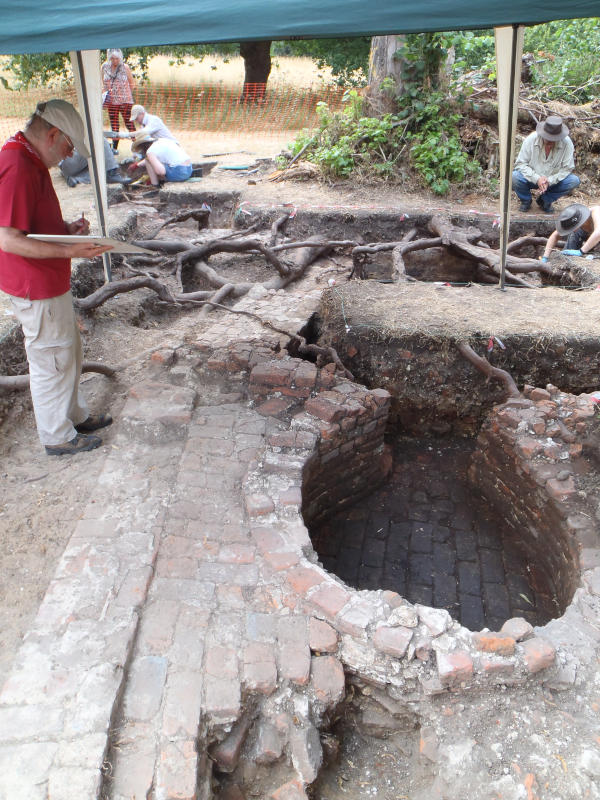
Fully excavated furnace at Elsyng, part of Henry VIII's kitchen range (photo: Enfield Archeological Society)
The second programme in Channel 5's archeological series Digging up Britain's Past will be looking at discoveries from the time of Henry VIII, ie the first half of the 16th Century, and specifically at the excavations carried out by Enfield Archeological Society at the site of Elsyng Palace, which was situated very close to the present Forty Hall.
Elsyng became the property of Henry VIII in 1539 and served as a royal palace until James I had it partially demolished in 1608. James used some of the material from Elsyng to extend another royal palace, Theobalds. Elsyng was completely demolished some time in the 1650s. It was only in the 1960s that its location was rediscovered.
The programme, to be broadcast at 7pm on Saturday 12th January, includes footage from last summer's digs at Elsyng, which concentrated on Henry VIII's kitchen ranges.
Links
Digging up Britain's Past (Channel 5)
Enfield Archeological Society website
Elsyng Palace (Wikipedia)
